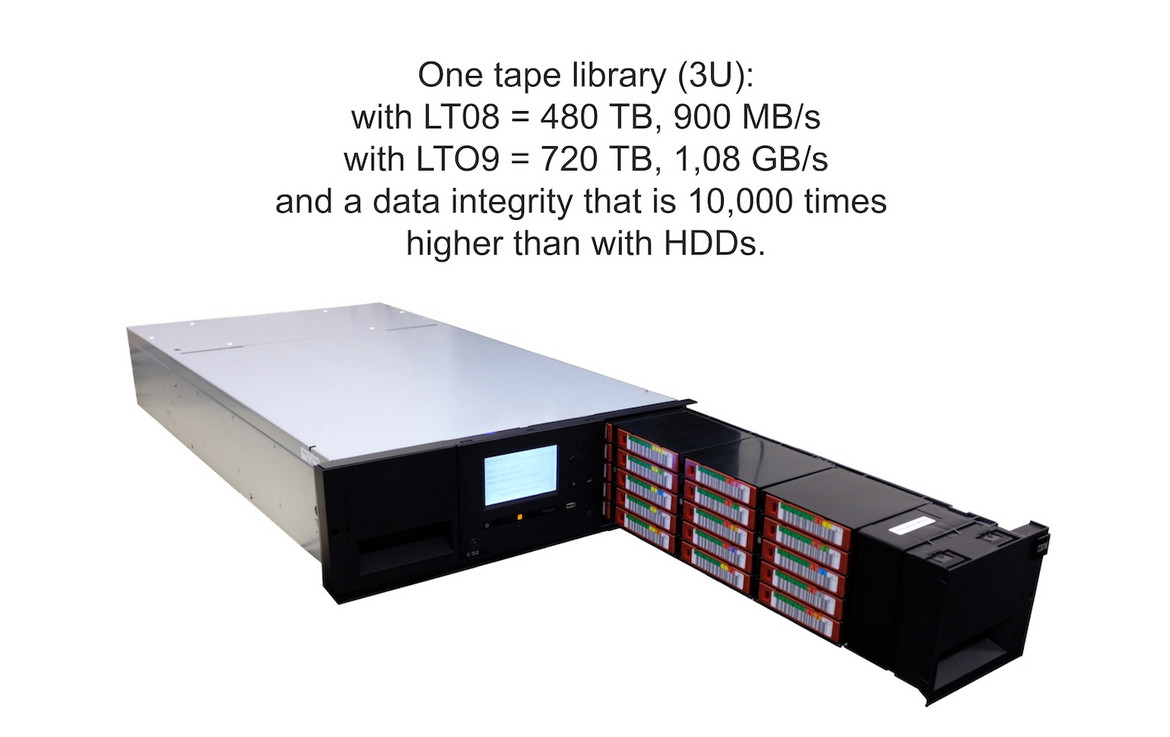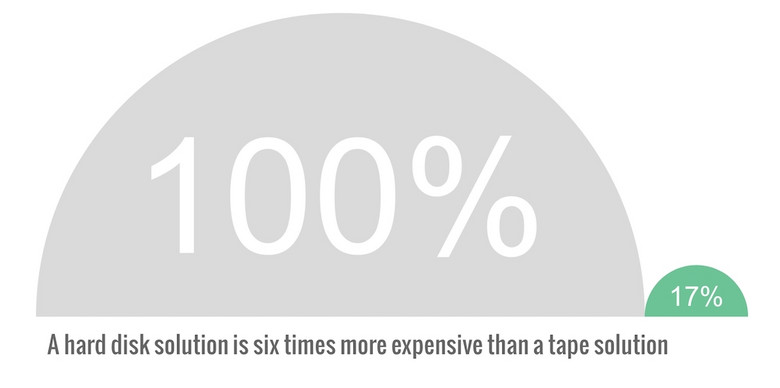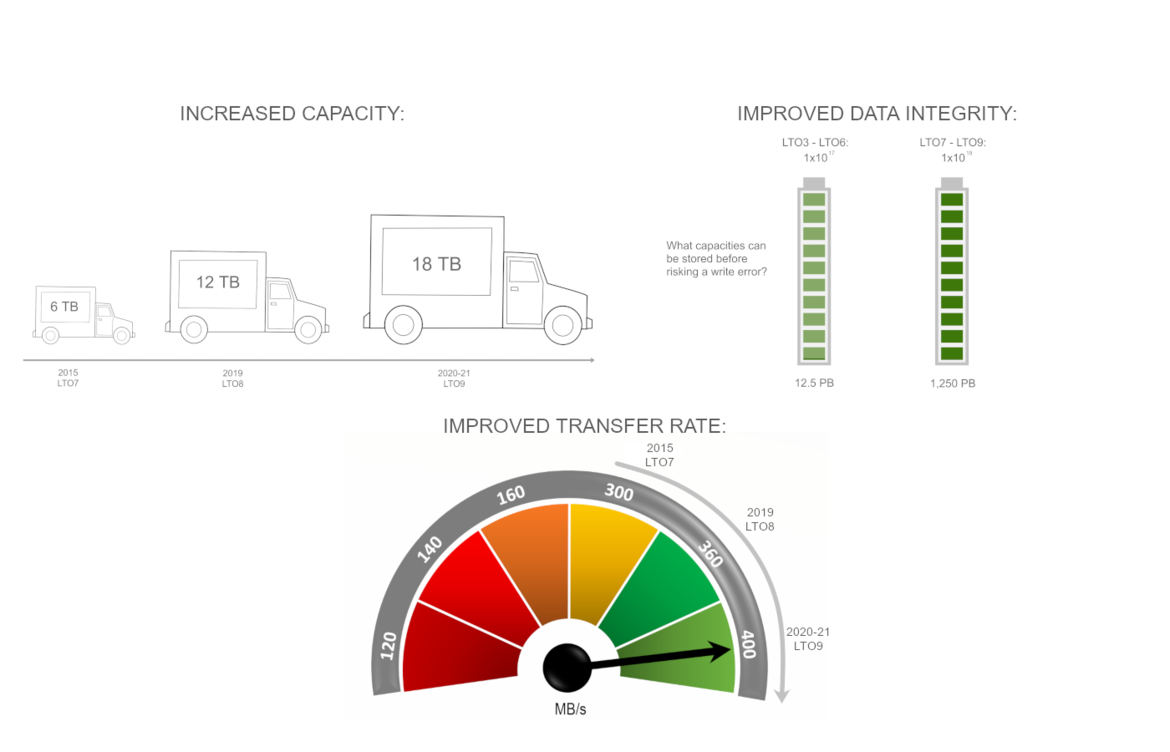Why More and More Companies Move their Data to Tape
2019 was a record-breaking year for tape technology: never before has so much capacity been delivered on tape. Melina Schnaudt from Fujifilm Recording Media GmbH shows why.

© priori1 | istockphoto.com
2019 was a record-breaking year for tape technology: never before has so much capacity been delivered on tape. Worldwide, the capacity delivered amounted to 50 Exabyte, i.e. 50,000,000 Terabytes and in Europe alone 17 Exabyte. The reason for this is that tape has become the standard in the field of data archiving.

Tape today has a total market share of 60% in the field of data archiving, 40% being largely shared by HDDs together with optical storage media such as CD and DVD. Large companies already saw the advantages of tape years ago, with 97% of the 10,000 largest European companies using tape for their data archiving needs today. Each year, the capacity delivered on tape is growing by 24%.
Tape is standard in the field of data archiving
Storing data safely for a long period of time is necessary, as much data must be archived for 30 years or more due to legal guidelines and regulations. This is only possible with tape, as hard disks are defective after 3 - 4 years and have to be replaced. Furthermore, data must be stored in such a way that, if necessary, it can still be read after 30 years. All the data of everyday life is on tape: Your taxes, the movies you watch, the car industry, your bank details, hospitals, Social Networks, governments, your children’s school records, and your insurance. Everyone creates data every day that is stored on tape. However, not only large companies store their data on tape – even a hair dresser or a butcher and all the other companies that want to or have to store certain data permanently use tape.

Thanks to scalable tape hardware, there is a tape solution for everybody – from the largest users to the smallest company. Tape has the cheapest price per TB and is perfect for the accumulation of data –
while accumulating data on disk would be far too expensive, and the disk too fragile. A tape solution is around 600% cheaper than a comparable hard disk solution. Since tapes are decoupled from any network, the data on tape is safe from viruses and hackers. This is a decisive advantage, especially in times of ransomware. If a second copy of the data is then stored on tape at a second location, even catastrophic events like fires or floods at the headquarters can no longer damage the data.
Tape is good for the environment
Not only does tape offer the lowest price per TB, a lot of electricity can at the same time also be saved by using tape. In contrast to hard drives, tape technology consumes hardly any electricity, except for the write and read process. Hard drives, on the other hand, have to be driven and cooled around the clock, because the stored data needs to be constantly validated due to the ongoing demagnetization and, if necessary, rewritten to avoid data loss. If the data is saved on tape, electricity is no longer required for further storage: the tape can simply be stored on the shelf or remain in the library – the data remains securely stored. Furthermore, almost all of the energy that a hard drive consumes is converted into heat. In the majority of the data centers in operation today, around 40 to 50 percent of the total power consumption is used for cooling. Since no thermal energy is generated using tape, significantly less cooling is required.
In conclusion, wherever data has to be stored long-term, switching to tape media is a solution to save money and carbon emissions. The 2015 TCO analysis by the Clipper Group concluded that the average cost of electricity for long-term data storage on disk is 26 times higher than the cost of long-term storage of the same amount of data on tape.
With the development of new tape generations, the storage capacity per tape is increased and the writing speed is improved. Since electricity is only used during the writing and reading process, faster backup times inevitably lead to cost savings. For example, LTO9 will offer 18 TB per tape with a transfer rate of 400 MB/s. The resulting shorter backup times result in less power consumption and, as a result, lower carbon emissions.
Tape is modern
Talking about LTO9: Tape has achieved enormous technological breakthroughs in terms of capacity, transfer rates and data integrity in recent years.

Tape as it was known in the year 2000 no longer exists today – the technology is not comparable at all. This is partly due to the fact that the intended use of tape has changed. In the past, backup data was saved on tape and long-term data was printed and stored on paper. Later, backup data was increasingly stored on hard disk, while paper archives disappeared as digitalization progressed. The age of digital archiving began. At the same time, new rules and regulations were issued so that people were obliged to make sure their data would be readable for many years. However, it was quickly realized that hard disks were not suitable for long-term storage: Since hard disks are not designed to last more than four years, and because of their fragile mechanism, they need to be replaced on a regular basis. In the second half of the 2010s, tape technology achieved major technological breakthroughs, but even before these developments, tapes could keep data safe for up to 30 years. There is no other storage technology that has managed to leap forward in terms of development as much as tape has managed to. Furthermore, the technological development is ongoing: We already know today what coating technology will be used in the 2030s that will bring tapes with a capacity of 400 TB per tape!
Melina Schnaudt coordinates EMEA-wide communication about the developments in tape technology at the Kleve office at Fujifilm Recording Media. With her MBA in Marketing Management and her editorial background in the technical press, she covers all fields of communication, including the website, press, exhibitions and advertising material. At the moment, she is developing content on new fields of tape technology, like for example the ecological footprint of tape and the future challenges for data archiving.
Please note: The opinions expressed in Industry Insights published by dotmagazine are the author’s own and do not reflect the view of the publisher, eco – Association of the Internet Industry.



